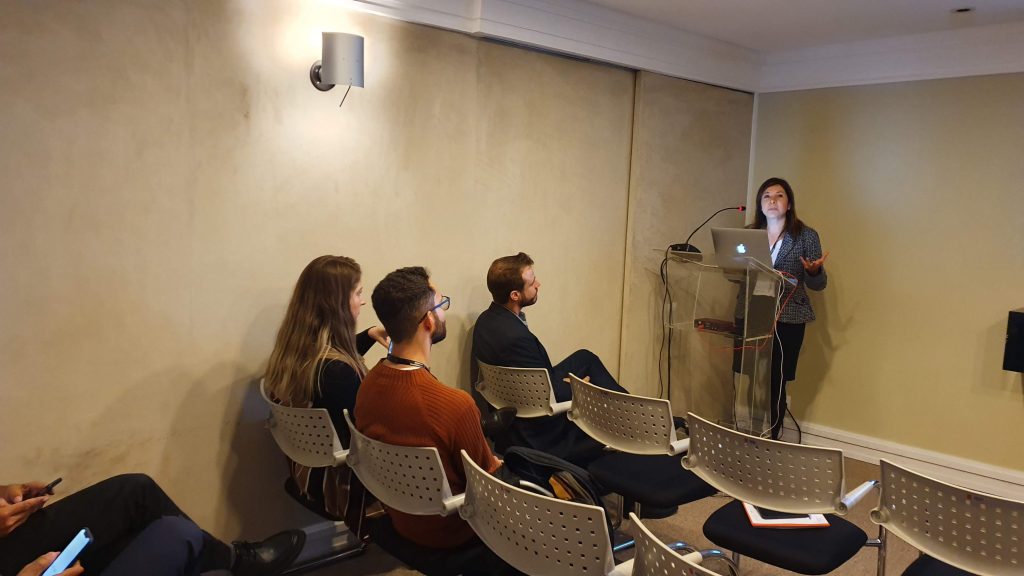Latin Safe welcomes GE and Siemens to SPR Radiological Protection Study Group
Posted on: 2019-10-16
Latin Safe initiative at its October SPR Radiological Protection Study Group meeting welcomed GE and Siemens to present their solutions and discuss new dose management tools in hospitals. The idea was to show in a practical and objective way how this control is done and both presented their dose and radiation control platforms / software to demonstrate. Philips was also invited, but declined the invitation.
Siemens Healthcare
The first company to introduce its platform was Siemens Healthcare, with Paulo Henrique Ruis Garcia, clinical application specialist in digital services, and Luciana Hadade, costumer success manager.

The solution, called TeamPlay, is a platform that aggregates multiple information related to image acquisition, bringing transparency and analysis tools. It’s possible to check the exams dose, collect information related to radiation, as well as more analytical information, such as the amount of exams performed, with filters per device, body region and others. It is a tool 100% located in the “cloud” (online) allowing to send any data to the platform, with access in any region that the professional is. There is data encryption for security, allowing access outside the institution but without showing patient data.
The solution evaluates tomography, plain radiography, mammography, intervention and nuclear medicine exams by associating usage parameters and gathering information, besides offering a marketplace.
GE Healthcare
Presenting GE’s platform were Leonardo Gross, leader in digital solutions for Latin America and Alessandro Bax de Barros Aquino, digital product specialist.
The brand solution is DoseWatch, allowing you to maintain dose control and management in a structured manner by modality (CT, cardio, mammography, nuclear medicine), body region, device installed, and can, for example, consult lists of the latest tests performed, set up alerts, enter each exam, and analyze acquisition parameters (how much on time, how much in months, and even in the series in which the exam was taken). In addition, the platform allows assessing the patient’s centralization at the time of examination and their mA modulation.
There is also a module called “angel” directed to pregnant women who need to perform imaging exams to assess the dose that the fetus is absorbing.
It also features organ-specific dose calculation (estimating absorption in each organ – developed in partnership with Duke University).

Regarding intervention exams, the tool shows the region that absorbed the highest dose, allowing the physician to warn the patient about possible areas of local change. It also provides an interactive tool for how the exam took place.
The tool also calculates average dose level, contrast volume, physician’s justification at the time of examination and exports reports and tables in Excel or PDF.
Conclusion
Finally, all participants answered questions after the presentations and both companies and clarified all the points questioned.
Remember that brazilian law will change soon and there was no conflict of interest in the presentations; yet, Latin Safe had no financial benefit whatsoever.
Sign up for the next meeting on November 4th: http://bit.ly/latinsafe04-11-2019